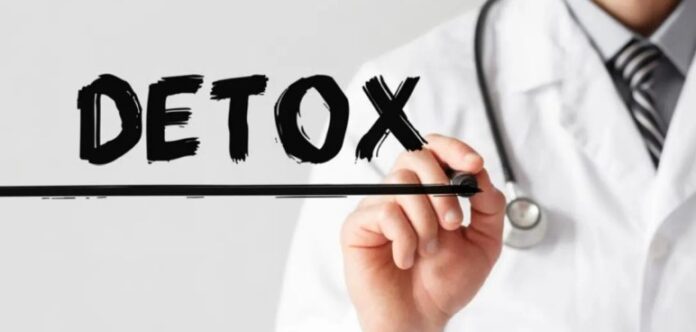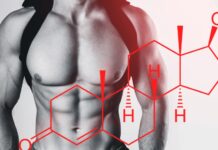Heroin addiction is a problem not only for the addicts themselves but also for their families and friends. Because of this, more heroin recovery centers are being opened to help those who have an opiate dependency. These facilities provide different services that can help addicts overcome their addiction safely and effectively. While there are some similarities among these types of facilities, some may offer better treatment options than others, so it’s important to research carefully before committing a loved one to any program.
Here are 3 things you should look out for in the best heroin recovery centers.
1. An Onsite Detoxification Process

Whether you go to a residential facility that offers all-inclusive care or one where the patient lives at home and comes in for treatment, it’s important that addicts aren’t tempted by drugs while they are trying to kick their habit. An effective detox program from The Forge Recovery Center will help addicts withdraw safely so they can move forward with the rest of their treatment plan without serious discomfort or relapse risk.
The longer an addict has been using, the more intense their withdrawal symptoms may be when he first stops taking opioids, so this aspect of recovery should never be rushed; having professionals who know what they’re doing guide him through each step is key to minimizing risks associated with quitting cold turkey. If withdrawal symptoms have began, experts from clinics and rehab centers would prescribe suboxone strips to take for people suffering opioid addiction to help them go through the process of detoxification.
You should also look into the facility’s accreditations, licensing, and certifications to ensure it meets quality standards set by organizations like The Joint Commission or CARF (Commission on Accreditation of Rehabilitation Facilities), so you know your loved one will get the best care possible while staying there. There are many different types of professionals who work at these facilities; some specialize in detoxification while others focus mainly on counseling services such as group therapy sessions. Some may even have their own pharmacies where patients can pick up medications prescribed during treatment if they need them after leaving rehab.
2. A Comprehensive Program that offers more than just Detoxification and Withdrawal Management

A full continuum of care means the recovery center will have different programs to fit each patient’s needs, whether he is living at home or staying onsite during treatment. These programs include;
*Cognitive-behavioral programs: This program specifically focuses on changing an individual’s thoughts, feelings, and behaviors that may be leading to their drug abuse. An example of a rehab center that offers this program is Foundations Recovery Network.
*Holistic programs: Holistic programs incorporate mind, body, and spirit into one system to ensure overall wellness. In other words, it incorporates different types of therapies such as meditation, yoga, and acupuncture which have been shown to relieve stress and tension from the body while also controlling cravings from heroin.
*Physical fitness programs: They help the recovering addicts focus on their physical well-being by incorporating workouts into their daily schedule. Different types of exercise programs are also offered at most of these programs, including yoga, tai chi, circuit training, low-impact aerobics, weightlifting, or Zumba dancing programs.
*Financial programs: Since it can be difficult for people who are struggling financially due to drug abuse and addiction. The programs help recovering addicts learn the basics of managing their personal finances as well as how to create a budget so they can become more self-sufficient economically (Financial Coaching ). Different types of programs related specifically to money management are taught at these centers which include debt reduction, credit repair, and debt consolidation.
*Job search programs: They help recovering addicts find suitable employment after they have completed their addiction recovery treatment. The programs also help them prepare the necessary documents to complete their resume as well as go through mock interviews so they can learn how to effectively communicate with potential employers. This program not only helps people acquire new skills but also teaches social skills such as improved communication.
*Around-the-clock monitoring: Helps ensure an addict doesn’t relapse while their brain chemistry adjusts to life without drugs.
*Group therapy sessions: Where other addicts share their stories and support each other through the recovery. These programs allow recovering addicts to engage themselves socially through different collaborative activities like arts and crafts.
*Relapse prevention training: Help patients avoid slipping back into old habits and start using again once they return home.
*Medications: This includes buprenorphine or methadone if needed to help with the detoxification process (which should be taken under strict supervision).
Buprenorphine is a partial opioid agonist that binds to opioid receptors in the brain to alleviate symptoms of withdrawal and reduce cravings. Methadone, on the other hand, is a full opioid agonist that acts like other opioids but doesn’t produce the same euphoric effects. These opioid treatment medications can make heroin detox safe and comfortable for the patient.
The longer an addict has been using heavily, the more intense their first few weeks in recovery will be while their brain chemistry adjusts to life without opioids flooding their system constantly, but they will need support throughout this time in order to maintain long-term sobriety.
3. Placement Assistance Once the Treatment Process is Complete

Every recovery center should have a strong aftercare component to help addicts succeed in sobriety, but not all of them do this equally well. Some facilities offer no placement services at all or only minimal ones; they may send patients home with referrals that can be hard to follow up on without guidance from those who know their situation best.
A good recovery center will assess a patient’s needs as part of their initial intake interview and then find the patient a suitable halfway house if they don’t already have a place to live after completing treatment. Other transitional services such as job training programs so he has some income while he looks for employment.
Overall, a satisfactory recovery center should provide multiple components such as detoxification and counseling services to help addicts heal from addiction. It’s important that this process doesn’t just involve going through withdrawal symptoms safely; it also means helping them develop a healthier lifestyle so they can stay clean long term without having cravings or triggers around drugs that could lead to relapse down the road. These kinds of components help addicts remain sober after they complete their treatment program, which is the ultimate goal of any rehab center.









